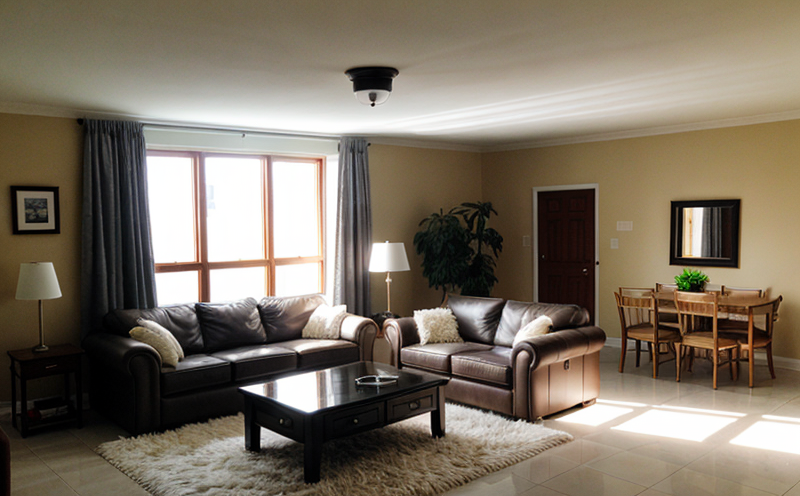EN 50294 Indoor Lighting Testing of Automotive Interior Lamps
The European standard EN 50294 specifies the requirements and test methods for the indoor lighting testing of automotive interior lamps. This standard is crucial for ensuring that these lights meet the necessary safety, performance, and durability criteria before they are integrated into vehicles.
Automotive interior lamps serve multiple purposes, including enhancing visibility within the vehicle, providing aesthetic appeal, and contributing to occupant comfort. The lighting systems must be meticulously designed and tested to ensure they perform reliably under various environmental conditions. EN 50294 addresses these requirements by outlining a series of tests that simulate real-world usage scenarios.
The standard covers several key areas, including luminance, color rendering index (CRI), chromaticity coordinates, and light distribution patterns. Luminance is measured to ensure the lamps meet brightness standards, which are critical for providing adequate visibility within a vehicle's interior. The CRI value indicates how accurately colors appear under the lamp’s illumination, while chromaticity coordinates define the perceived color of objects illuminated by the lamp. Light distribution patterns are important to prevent glare and ensure even light coverage.
The testing process involves several steps aimed at simulating real-world conditions. Specimens must be prepared according to EN 50294 specifications, which include mounting the lamps in a standardized fixture that replicates their intended installation within an automotive interior. The test setup is designed to simulate different ambient lighting conditions and vehicle configurations.
Once mounted, the lamps undergo a series of tests using specialized equipment such as integrating spheres for luminance measurement, colorimeters for CRI evaluation, and spectrophotometers for chromaticity analysis. Light distribution patterns are analyzed using light meters placed at various angles around the lamp to capture its spread and intensity across different areas.
The results of these tests are meticulously documented in a report that includes detailed descriptions of each test conducted, the equipment used, and the final numerical values obtained for luminance, CRI, chromaticity coordinates, and light distribution patterns. Compliance with EN 50294 ensures that the lamps meet the necessary safety and performance criteria, thereby enhancing passenger safety and comfort.
Moreover, EN 50294 emphasizes the importance of durability testing to ensure longevity under typical vehicle usage conditions. This includes assessing the lamp's resistance to vibration, thermal cycling, and exposure to harsh environmental factors such as humidity and temperature fluctuations. Durability tests are conducted over extended periods to simulate real-world scenarios and verify that the lamps can withstand these challenges.
In summary, EN 50294 Indoor Lighting Testing of Automotive Interior Lamps is a critical process for ensuring that automotive interior lamps meet stringent safety and performance standards. By following this standard, manufacturers can produce reliable, safe, and aesthetically pleasing lighting systems that enhance the overall driving experience.
Why It Matters
The importance of EN 50294 cannot be overstated in the automotive industry. Compliance with this standard ensures that all interior lamps meet rigorous safety and performance criteria, thereby enhancing passenger safety and comfort. Non-compliance can lead to recalls, reputational damage, and potential legal issues.
For quality managers and compliance officers, adhering to EN 50294 provides a clear framework for ensuring product quality and regulatory compliance. R&D engineers benefit from this standard by having a standardized method for evaluating new lamp designs before they are integrated into vehicles. Procurement teams can also use the standard as a benchmark when selecting suppliers, ensuring that only high-quality lamps are used in their products.
Scope and Methodology
The scope of EN 50294 encompasses both incandescent and LED lamps intended for automotive interiors. The standard provides detailed guidance on the test methods and acceptance criteria for several key parameters, including luminance, CRI, chromaticity coordinates, and light distribution patterns.
- Luminance: Measured using integrating spheres to ensure adequate brightness within the vehicle's interior.
- CRI: Evaluated with colorimeters to assess how accurately colors appear under the lamp’s illumination.
- Chromaticity Coordinates: Determined using spectrophotometers to define the perceived color of objects illuminated by the lamp.
- Light Distribution Patterns: Analyzed with light meters placed at various angles around the lamp to capture its spread and intensity across different areas.
The methodology for testing involves mounting the lamps in a standardized fixture that replicates their intended installation within an automotive interior. The test setup simulates different ambient lighting conditions and vehicle configurations, ensuring that the lamps perform consistently under various real-world scenarios.
Industry Applications
- Automotive Manufacturers: Ensure compliance with EN 50294 to meet regulatory requirements and enhance product quality.
- R&D Engineers: Use the standard as a benchmark for evaluating new lamp designs before integration into vehicles.
- Procurement Teams: Select suppliers based on their adherence to EN 50294, ensuring high-quality lamps are used in products.
- Safety Inspectors: Verify that interior lamps meet safety and performance standards as defined by the standard.





